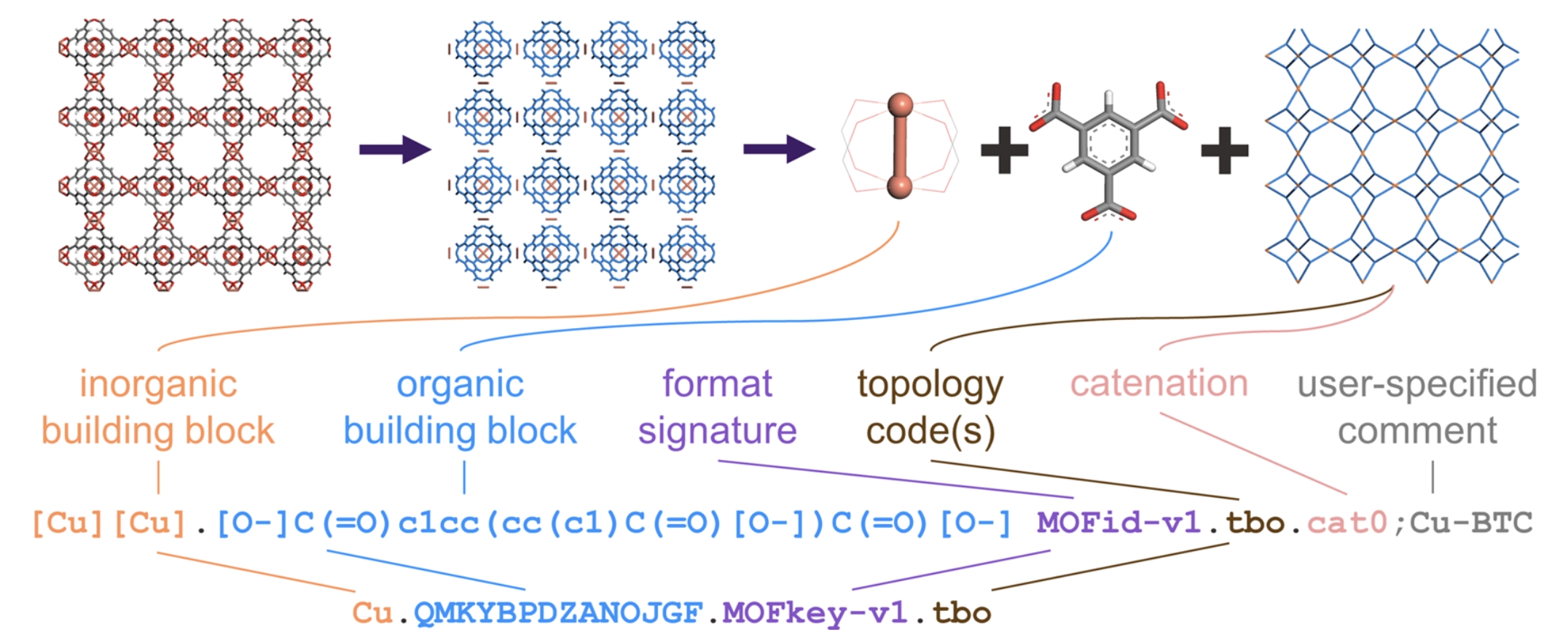SMILES, MOFid, and MOFkey
What are SMILES strings, a MOFid, and a MOFkey?
In prior work by Bucior et al., a pair of methods known as MOFid and MOFkey are described that can be used to assign a unique name for a given MOF. MOFid works by deconstructing a MOF into its node(s), linker(s), and topology. The nodes and linkers are represented as SMILES strings, the topology is determined using Systre, and any catenation is noted. These factors are combined into a single unique "MOFid". The MOFkey is simply a shorter, InChI-based hash of the MOFid. These methods are shown below for HKUST-1 (also known as Cu3(btc)2 and Cu-BTC):

The MOFid code is available here with a web-based version available here.
The SMILES search on the MOF Explorer is a partial-match of the MOFid. As such, one can query by just the node, just the linker, or even a substructure of the linker. If the user wishes to supply both a node and linker query, they should be provided in the MOFid format (separated by a "." with the node(s) listed before the linker(s)).
Last updated
Was this helpful?